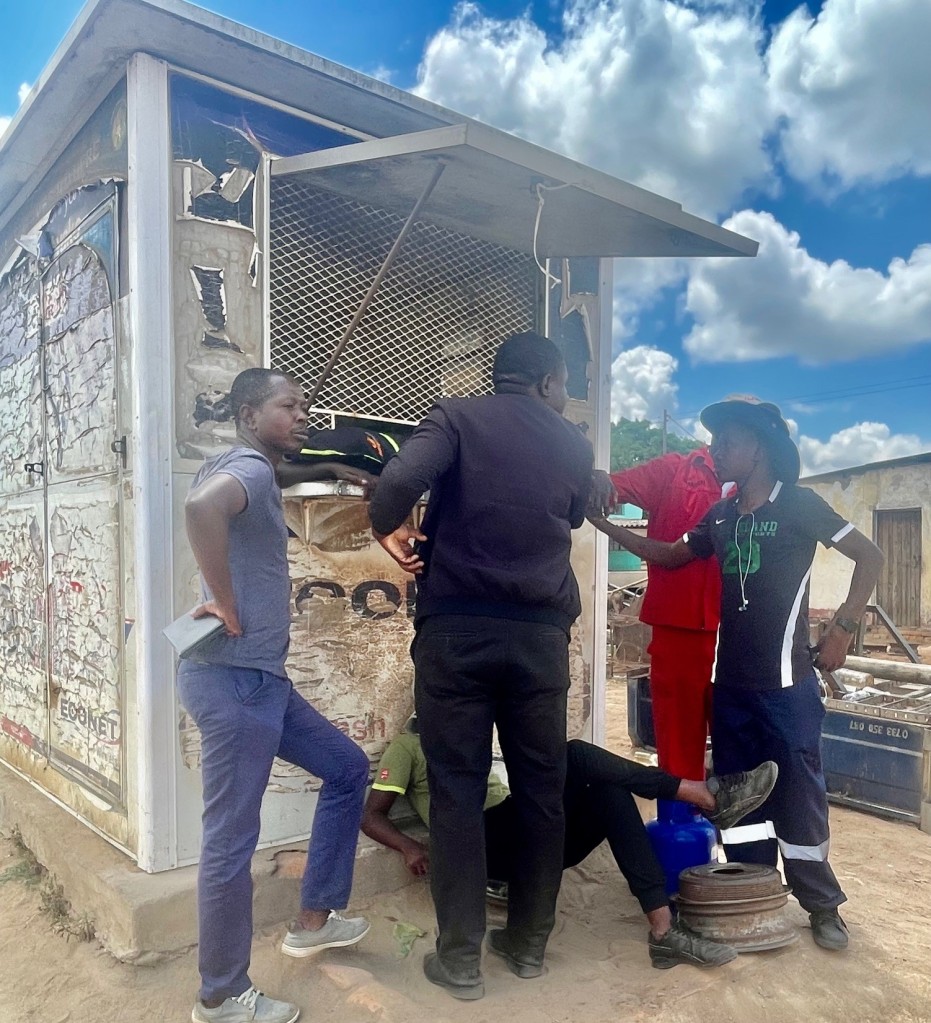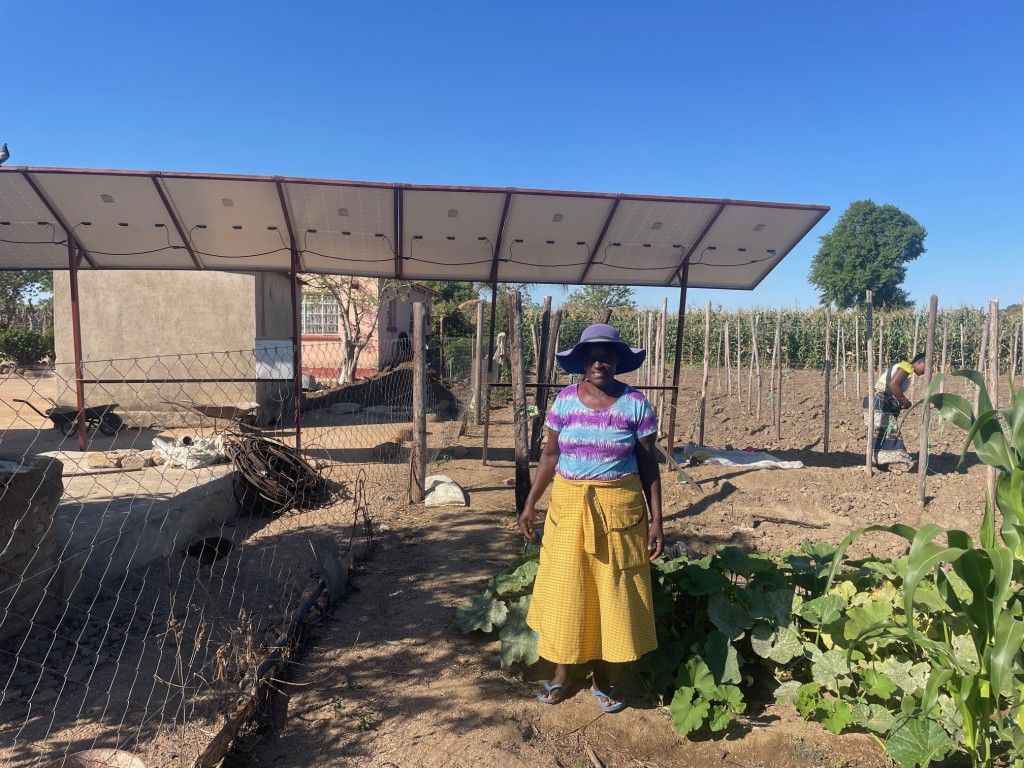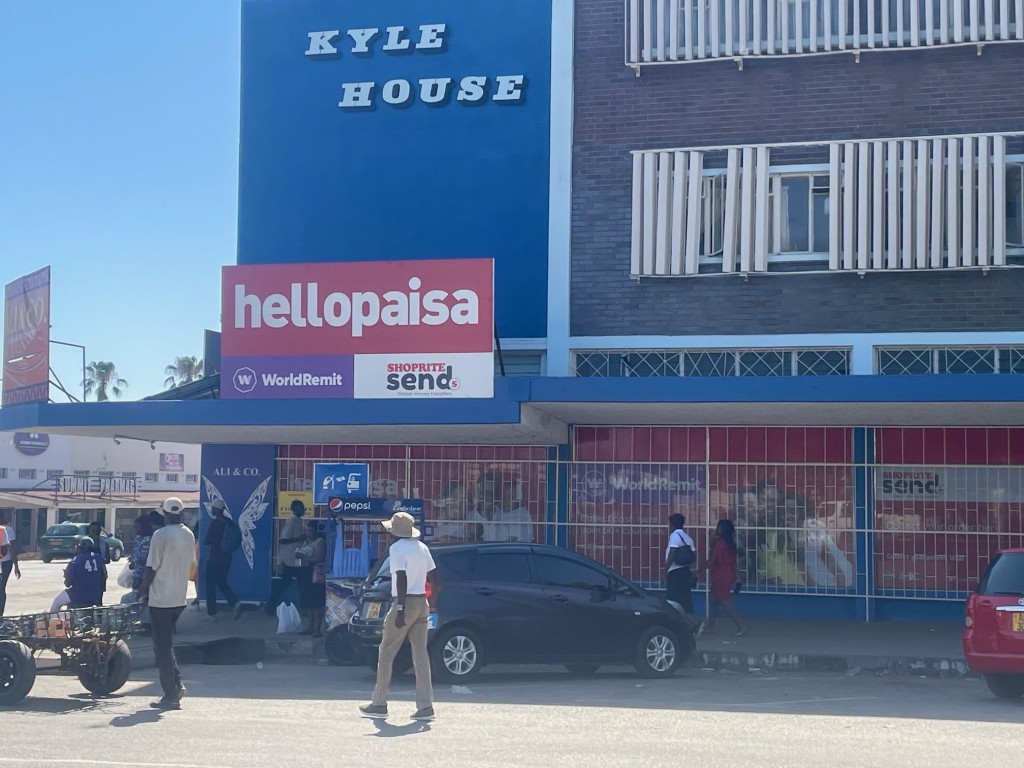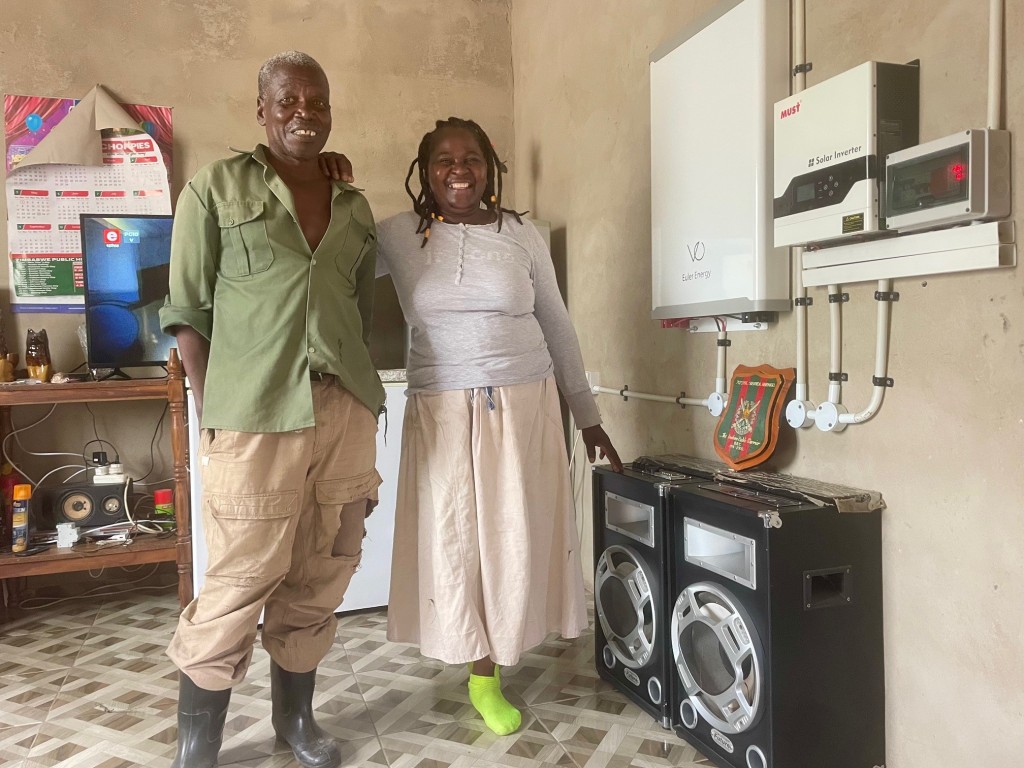
The flow of remittances to Zimbabwe is huge, with diaspora remittances from outside the country estimated at over US$1 billion per annum, or around 16% of total foreign exchange receipts. This comes from a large network in the diaspora, whether in the region (mostly South Africa) or further afield, including the UK. Remittances also flow internally within the country, from people working in town in government jobs or in businesses of different sorts. Flows of finance also come from off-farm work, including artisanal mining, which is very significant especially for younger men in some parts of the country.
However, remittance flows are subject to wider economic and political conditions, both internationally and within Zimbabwe. Despite many expecting a dip in international remittances during the COVID-19 pandemic as relatives were retrenched and economic conditions worsened in many parts of the world, they actually increased, crossing the US$1billion mark, as relatives abroad “rose to the occasion”. International remittances however are always uncertain. Xenophobic attacks on Zimbabweans in South Africa make many fear to go and others return. Meanwhile, new, restrictive immigration requirements in the UK, preventing families from being together, will put many off joining the flow of labour to support the UK’s health and care system. Within Zimbabwe, with the on-going economic crisis now persisting over 25 years, the option for paid work outside farming has contracted, and the possibilities of sending money to rural home areas has declined. Indeed, remittance flows have reversed in many instances, with farmers in the land reform areas supplying food to those in town or relatives in the communal areas, as discussed further below.
Remittances have long been part of the financing of agriculture in Zimbabwe. In the relatively stable economic conditions of 1980s, for example, around 65% of farm income was derived from remittances from all sources in the communal areas, with significant impacts on poverty reduction. The old pattern of migration to off-farm work in towns, on farms and in the mines established in the colonial era persisted. The ‘reserves’ (now communal areas) were areas where labour resided and could be contracted for periods in what was the core economy, controlled by the white racial minority. Following independence in 1980, this pattern persisted, but has changed dramatically since the late 1990s, when the old core economy declined due the effects of first structural adjustment and after 2000 due to land reform.
These changes resulted in the emergence of a new, largely informal economy centred on small-scale farms and micro-enterprises of different sorts, with the post-2000 resettlement areas at the core of a new rural economy. Women became more involved, as traders and small-scale entrepreneurs, as the reconfigured land use provided new opportunities, especially around the growth of local value chains and the small towns in former large-scale farming areas, as we’ve documented extensively on this blog. While the official statistics focused on what was the former formal economy showed collapse, any quick observation of what is going on shows that these depressing numbers ignore much vibrant economic activity across rural areas.
Although the demographic cycle of largely male migration to formal jobs resulting in remittances flowing to rural areas for investment – in the past mostly cattle – has changed, the remittance economy is still important as the headline statistics show. How does this work? What mechanisms are used for transfers? What investments result? These are the questions tackled in this blog.

The many uses of remittance income in rural areas
Remittances may be for small, regular requirements – groceries, school fees and so on – for emergencies – such as dealing with a pest or animal disease outbreak, paying for medical expenses or coping with drought. But crucially, in the absence of other forms of financing (see previous blog), remittances are also essential for lumpier investments. Today such investments are crucial for encouraging growth in the agricultural economy, and for moving agricultural production towards a more commercial orientation.
As we have observed across our sites, investment in irrigation is vital, as people intensify on smaller plots. Jojo water storage tanks, irrigation pumps, piping and so on are in high demand and can be seen in many farms across the country. Investments in machinery, including grinding mills, peanut butter processing equipment, transport, two-tonne trucks, pick-ups and so on is also crucial in the new agricultural economy, as a previous blog series has shown. All of these benefit both from the sales of agricultural surpluses and from remittances, in varying combinations depending on crop harvests and the connections of the household to remitting family members.
Remittance flows therefore follow a demographic cycle, with children growing up leaving the farm home and getting jobs at home and abroad. Not all are able or willing to remit but many do, keeping the link across generations between farms and a wider, increasingly global, network. We have been exploring the patterns of accumulation across our sites, and a clear pattern emerges with investment in education being financed often through agriculture, resulting in few surpluses for investment except in exceptional years, but educated kids will often be able to send money home later once they gain employment in later years, meaning parents can then invest in intensification, often to compensate for lack of family labour and to make farming more manageable in old age.
Migrants’ ‘projects’: cross-generational links to the farm
A particular pattern of contemporary remittances from those who have jobs elsewhere, especially abroad, is investment in ‘projects’. Across our sites we see a whole range of investments, including piggeries, fish farms, goat projects (especially improved breeds), beef cattle feeding/fattening, transport/marketing projects, broiler operations and irrigation plots for intensive horticulture, requiring boreholes, water storage, pumps and pipes. These projects are established on parents’ land reform farms where surplus land and water can be put to good use. Diaspora sons and daughters may employ labourers to take care of the projects, but their parents must provide overall management. Profits are used to support the family home, as well as school fees for younger siblings, medical and funeral expenses. Many diaspora children build houses and invest in all the mod-cons of town living, with solar electricity systems, flush toilets and the rest. Large TVs, nice sofas, sound systems and so on can be found in many people’s living rooms these days in houses with metal roofs, multiple rooms and fancy windows and doors.

As one of our informants commented, “the farms these days are like town. Solar, TVs, fridges. We invest in all this to lure our children home. We want them to come back and be involved in the farm.” At another farm in Masvingo district we were admiring the tall stands of irrigated maize and the considerable irrigation infrastructure around the homestead, including a new borehole, a water storage tank and drip irrigation in the field. Mrs M, a widow, explained that this was investment from her eldest son who after leaving college got jobs that allowed him to develop the farm. This is providing income for the whole family, including paying for school fees for the younger children. It is an impressive investment and, as Mrs M explains, she gets lots of visitors marvelling at the achievements. She is making significant profits now from the farm, but the start-up investment could not have happened without the remittances. She also points out that her son is keen on farming, and as he works locally comes often and is keen on taking over.

This connection through investments is thus important for intergenerational transfer, as well as current investment. Even though the farms of the future will look very different to the ones of today (more well equipped, mechanised and intensive), the key thing for today’s farmers is to get their children (boys usually, but also girls) to take over the farm when they become old or die.
Remittances are not guaranteed: migrants’ challenges
Of course, not everyone can get a well-paying job that allows for remittances home. In fact, the classic route of successful education leading to government jobs of the past no longer provides sufficient resources, as teachers, nurses, extension workers, clerks, even higher-level civil servants, get a salary that is barely sufficient for survival let alone providing surpluses to remit. Going abroad is no longer a certain route to surplus income either. The care jobs that many Zimbabweans end up in in the UK, for example, are low paid and, without wider support networks, diaspora families frequently struggle. The myth of great riches to be found in the UK, Canada, the US or elsewhere persists in Zimbabwe, encouraging people to leave and often resulting in resentments from those at home when funds are not forthcoming. As one informant from Matobo commented, “My husband’s brother’s son went to the UK. He went last year, but he’s already back. He was a nurse. He came back as it was so harsh there. The employment agents always exploit you, and it’s so difficult to look after families there, as there’s no help.”
The same applies to South Africa where the majority of migrants end up. These may be short-term jobs in the farms of Limpopo province or in the mines of the Rand, while the lucky few may secure jobs as teachers, lecturers or in business, where pay is reasonable. However, the conditions for Zimbabwean migrants in South Africa have deteriorated. As in many places, migrants are seen to be threatening local jobs and the rise of a populist and often violent xenophobia has resulted in life in South Africa becoming increasingly difficult, even dangerous as attacks increase. One of our informants in Wondedzo explained what happened to her brother. He was subject to an attack by a mob and he was burnt inside his locked house. He survived but was severely burnt and he returned home disabled and in need of continuous medical attention.
This is sadly not an isolated incident and, even if not resulting in injury or death, the underlying threats are there, generating anxiety, stress and a sense of continuous insecurity. The rising tensions and violence of South Africa makes many want to leave. As our informant explained, the only upside of this terrible story was that it dissuaded her sons from going to South Africa, and instead they have established homes on their now subdivided self-contained A1 farm and are making a living from agriculture at home. A combination of the decline of the South African economy, discrimination against migrants and xenophobic violence has meant that there is now a steady flow of returnees coming back to Zimbabwe from South Africa and seeking land for farming, a phenomenon reported across our sites.
Fast transfers: the revolution in electronic money
The ability to send funds to relatives back home has increased dramatically in recent years thanks to the growth of efficient electronic transfer systems, which are available everywhere.
Anyone sending remittances to Zimbabwe will be familiar with Western Union, World Remit and so on, alongside Mukuru and Mojomule, which are local equivalents. The system is quick and can be done on a phone in minutes with money being available at agent locations across the country. Today US dollars are usually available, and money can be received quickly at relatively low cost (for the amounts I generally transfer, I pay £2.90 to Western Union with an exchange rate which is not too bad). There are lots of opinions as to which system is best, and many we talked to preferred Mukuru as it has such a wide network and, especially for unregistered migrants in South Africa, the paperwork is considerably less for initial registration.
Such systems are complemented by the now ubiquitous Ecocash, which is immediate and based on mobile money transferred through phones. Transfers can happen in US dollars or Rands but also in RTGS or some combination. Ecocash transfers happen continuously moving funds around the country (and indeed the world as you can use the facility internationally) in large volumes. This has revolutionised the ability to manage money, facilitating investment, marketing and the payment of emergency costs across the rural areas.

Another form of remittance payment involves the buying of goods abroad and allowing relatives to pick them up at designated stores. This avoids the transfer of cash, which may end up not being put to good use but ensures that relatives are supplied with groceries (mostly), but also other goods. Hellopaisa is one such facility and is increasingly popular.
Compared to the past where cumbersome bank transfers or sending goods on buses were the norm, a whole suite of options is available for transferring funds today. This is vital for support for rural households, as well as helping to fuel investment and growth in agriculture, as many such investments we see across our sample farms can be directly traced to remittance payments, at least in part.
Changing flows
As noted above, remittance flows are neither static nor unidirectional. Changing economic conditions and increasing instability and violence means that long-established remittance destinations change. What happens in South Africa in the coming years, for instance, will have a huge impact on Zimbabwe. The return of migrants to seek land and farm in Zimbabwe is indicative of the value placed on having a rural home and the viability of farming as a livelihood. Coming back with some cash means that the capital constraints of getting going on a more intensified commercial operation are reduced. The growth of land leasing, rentals and land purchases across our sites, along with ongoing subdivision of plots to give land to children, is witness to the demand for land as an investment and livelihood option. This is not just returning diaspora migrants, but also other businesspeople, church leaders, those with political-military connections and others who see land as a good, safe source of income.
As many of our informants from both A1 and A2 resettlement areas point out, they no longer receive remittances from relatives in town or abroad but send them. As Mrs S from Matobo explained, “We sponsor our kids in town, not the other way round. Several are working single mothers and every time I harvest here, I send five 50kg bags of maize to town. Life in town is hard – much better to be here farming! In town you wake up in poverty, but here there’s always food, and you don’t have to pay. We’re trying to show our kids that life here is better. It’s different to the old communal areas where we were before – things are ‘modern’ in the resettlements!”

The flow of food and other agricultural goods (vegetables, meat and so on) from land reform areas is significant, and essential for food security and social protection in urban areas of Zimbabwe, as well as in communal areas where many settlers originally came from. This is a largely uncounted, unrecognised flow, but one that is central to the new economy of post-land reform Zimbabwe, likely outstripping many times over the overall value of the various donor projects supporting urban households with cash transfers and so on.
The remittance economy linked to land reform areas is vibrant and driving investment in rural areas, as well as supporting vulnerable households in towns and other rural areas across the country. Remittances do not flow in a single direction, are subject to changes in politics and economy both at home and abroad and involve an increasing number of transfer approaches that increase efficiency and enable quick responses. The changing dynamics of remittance flows remain under-studied yet are vitally important, as this blog has hopefully shown. Our future research will hopefully delve into this theme in more depth, adding some quantitative specification to some of the qualitative cases shared here.
How people make use of money – both from local farm production and from externally-derived sources – through approaches to saving in a highly volatile economy is the focus of the next blog in this series.
This blog was written by Ian Scoones and first appeared on Zimbabweland
